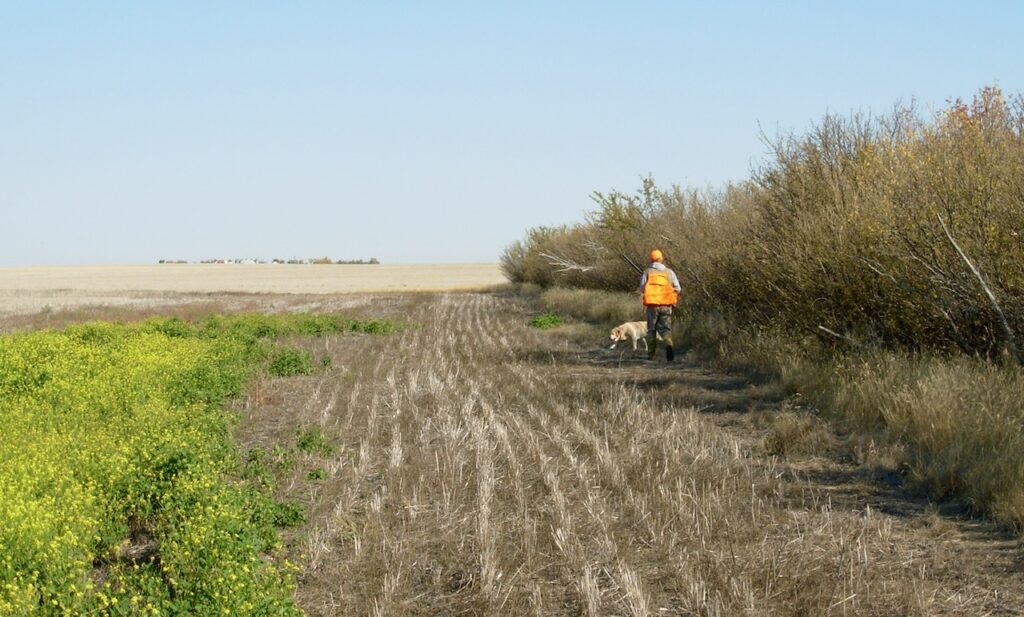ON THE HUNT FOR HUNS
To successfully pursue Hungarian partridge all season long, you need to switch up your approach in tandem with their changing behaviour
Advertisement
Search for mid-season Huns in terrain that offers protective cover from hawks
Advertisement
MID-SEASON
The prime time for hunting Hungarian partridge is after the grain has been harvested and before the snows of winter arrive. With the grain in the bin, identifying likely cover becomes easier, and the weather is generally cooler and wetter, making for better scenting conditions for dogs.
The most likely holding habitat is pretty obvious across most of the Huns’ range—anywhere they can hunker down and hide from the prying eyes of migrating hawks, their chief predator. Finding them is really just a matter of searching these obvious spots, particularly abandoned farmyards, caragana hedgerows and other windbreaks, ditch banks, fencelines, and dry slough beds amid cultivation.
Astute hunters can narrow the search even further by understanding the species’ microclimate needs and preferences. Huns simply do not like to get their feathers wet, so focus on dry and warm spots; they’re not always obvious, so take the time to dissect your hunting area before heading out. Even early-morning dew accumulated on grassy cover is enough to push out Huns. When that happens, they’ll invariably head at first light into the grain stubble, with its evenly spaced stalks and dry, open ground between the rows.
Advertisement
One of the mistakes many mid-season hunters make, in fact, is to head into traditional cover first thing in the morning, only to find it devoid of birds because of the early-morning moisture. You’re better off waiting until the day warms up a little; head out later in the morning and you’ll find the birds have moved back into thicker habitat.
Canola fields are a favourite destination for Huns. The stubble is roughly a foot high, meaning the birds are less visible from a distance or from above. The stubble is also spaced approximately six inches apart, providing plenty of warm black dirt that is out of the wind. With these fields providing the most heat and the least humidity—the ideal microclimate for Huns on cool, wet days—it’s no wonder the birds love them. Better yet, the stubble is full of crickets, grasshoppers and canola seed, all prime food sources.
On the wettest days when it’s raining, meanwhile, look for Huns under willows or caragana hedges, where the loose, open floor offers protection from rain.


